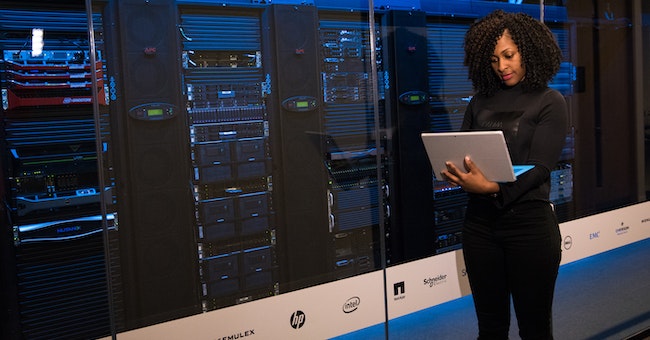Unlocking the Potential of the Semantic Web: The Future of Connected Knowledge

Introduction
The World Wide Web has transformed the way we access information, communicate, and conduct business. However, the vast amount of data available on the web can sometimes be challenging to navigate and comprehend. This is where the Semantic Web comes into play, offering a vision of a more intelligent and interconnected web that allows machines to understand and process information in a meaningful way. In this blog, we will explore the concept of the Semantic Web, its key components, benefits, challenges, and its potential to revolutionize how we interact with data and knowledge.
Understanding the Semantic Web
The Semantic Web is an extension of the current web that aims to make information more accessible and meaningful to both humans and machines. It was proposed by Sir Tim Berners-Lee, the inventor of the World Wide Web, with the vision of creating a web of data where information is structured in a way that can be easily understood and linked together.
At the core of the Semantic Web lies the idea of adding meaning and context to web resources, enabling computers to comprehend the semantics or meaning of data. This is achieved by using standard vocabularies and ontologies to describe relationships between different pieces of information.
How does Semantic Web Work?
The Semantic Web works by providing a standardized framework for representing and linking data on the internet in a machine-readable format. It enables machines to understand the meaning of data and make connections between different pieces of information. The key technologies used in the Semantic Web are:
Resource Description Framework (RDF): RDF is a data model used to represent information on the web. It defines a simple way to describe resources and their relationships, using subject-predicate-object triples (also known as RDF triples). Each triple expresses a statement about a resource, where the subject represents the resource, the predicate represents the property or relationship, and the object represents the value or another resource.
Web Ontology Language (OWL): OWL is a language used to define ontologies, which are formal representations of knowledge and relationships between concepts. Ontologies provide a shared vocabulary and set of rules for describing data, allowing machines to understand the semantics of the information.
SPARQL: SPARQL is a query language used to retrieve and manipulate data stored in RDF format. It enables users to ask complex questions about the data and retrieve specific information based on the relationships defined in the RDF triples.
Linked Data Principles: Linked Data principles emphasize the use of uniform resource identifiers (URIs) to identify and link resources across different datasets on the web. By linking related data, the Semantic Web creates a network of interconnected information, enabling machines to traverse and explore the web of data.
The Semantic Web works by transforming the traditional web of human-readable content into a web of machine-readable data. It adds explicit semantics to information, making it more meaningful and understandable for machines. By using standardized technologies like RDF, OWL, and SPARQL, data can be represented, stored, queried, and linked in a way that enables automated processing and inference.
In practice, the Semantic Web allows applications to access and combine data from various sources, perform intelligent searches, make inferences, and generate more relevant and context-aware results. It enhances data integration, knowledge discovery, and automated reasoning, opening up new possibilities for advanced data analysis and decision-making in various domains.
Benefits of the Semantic Web
Data Integration and Interoperability: The Semantic Web promotes data integration by providing a common framework for describing and linking diverse data sources. This enables machines to understand and combine information from various domains, fostering interoperability between applications.
Improved Search and Discovery: With the Semantic Web, search engines can better understand the context and meaning of data, leading to more accurate and relevant search results. This enhances the user experience and enables more effective knowledge discovery.
Automated Reasoning and Inference: OWL and Semantic Web technologies allow for automated reasoning and inference, enabling machines to deduce new knowledge based on existing data. This can lead to more sophisticated and intelligent applications.
Enhanced Data Collaboration: The Semantic Web facilitates data collaboration and sharing by providing a standardized and structured way of representing information. This promotes data openness and enables seamless data exchange across different platforms.
Applications of the Semantic Web
Healthcare and Life Sciences: The Semantic Web has the potential to revolutionize healthcare and life sciences by enabling better integration and analysis of medical data, leading to more accurate diagnoses and personalized treatment plans.
E-Commerce and Recommendation Systems: By understanding user preferences and product descriptions, the Semantic Web can power advanced recommendation systems in e-commerce platforms, providing customers with more relevant product suggestions.
Government and Public Services: The Semantic Web can enhance government services by improving data sharing and integration across different agencies. It can facilitate the delivery of personalized public services and enable better policy-making through data-driven insights.
Internet of Things (IoT): The Semantic Web can play a significant role in the IoT ecosystem by enabling devices to communicate and understand each other's data in a standardized and meaningful way.
Challenges and Future Directions
While the Semantic Web holds great promise, it also faces several challenges:
Data Quality and Integration: Ensuring the quality and consistency of data from various sources is essential for successful integration on the Semantic Web.
Scalability: As the volume of data on the web continues to grow, ensuring the scalability of Semantic Web technologies is crucial.
Privacy and Security: With increased data sharing and interconnectedness, safeguarding user privacy and data security becomes a paramount concern.
Adoption and Standardization: Widespread adoption and the establishment of common standards are necessary for the full realization of the Semantic Web's potential.
Recommended Online Resources for Semantic Web
Welcome to "Intro to the Semantic Web," a concise and informative course that provides a brief introduction to the concept of the Semantic Web. Explore the fundamental ideas behind the Semantic Web and its potential to transform the way we interact with data and information on the internet.
Course highlights:
Concise introduction to the Semantic Web concept.
Understand the fundamental ideas behind the Semantic Web.
Discover its potential to revolutionize data and information interaction.
Welcome to "Semantic Web Technologies"
In this course, you will delve into the fascinating world of the Semantic Web, an extension of the traditional web that adds explicit semantics to information, enabling better understanding and organization of data. Join us on this 6-week journey starting from February 4th, 2013, and discover how to represent knowledge and harness the power of semantic data on the web. The course is conducted in English, and you will gain valuable insights into the fundamentals of Semantic Web technologies.
Course highlights:
Explore the Semantic Web's extension of traditional web information through explicit semantics.
Learn how to represent knowledge and access semantic data on the web.
Join this 6-week online course taught by Dr. Harald Sack at openHPI.
What is Semantic Web One Minute Series
Welcome to "What is Semantic Web One Minute Series," a brief and concise course designed to introduce new learners to the Semantic Web. In just one minute, you'll gain a basic understanding of the Semantic Web's set of technologies, allowing machines to comprehend the meaning of data on the web. Discover how data is linked together in a machine-readable format, closely related to blockchain and Web 3.0 technologies.
Course highlights:
Quick and concise introduction to the Semantic Web.
Understand the concept in just one minute.
Learn how Semantic Web enables machine comprehension of web data.
Explore data linking for machine understanding.
Discover the connection to blockchain and Web 3.0 technologies.
FAQs
Q: How does the Semantic Web differ from the traditional web? A: The traditional web mainly relies on human-readable content, while the Semantic Web focuses on machine-readable data. It adds explicit semantics to information, allowing machines to understand and process data autonomously.
Q: What are the benefits of implementing the Semantic Web? A: Implementing the Semantic Web can lead to more efficient and intelligent information retrieval, enhanced data integration, and improved data understanding and interpretation by machines. It can also facilitate automated decision-making and knowledge discovery.
Q: What are some real-world applications of the Semantic Web? A: The Semantic Web has diverse applications, including intelligent search engines, personalized recommendation systems, healthcare data integration, e-commerce product catalogs, and open data initiatives.
Q: How does the Semantic Web relate to artificial intelligence and machine learning? A: The Semantic Web complements artificial intelligence and machine learning by providing structured and meaningful data for these technologies to analyze and learn from. It enhances the capabilities of AI and ML in understanding and processing information.
Q: What are some challenges and limitations of the Semantic Web? A: Challenges include the need for widespread adoption of Semantic Web standards, creating and maintaining ontologies, dealing with data inconsistency, and addressing privacy and security concerns related to sharing semantic data.
Conclusion
The Semantic Web is a powerful vision for the future of the web, where information is not only interconnected but also semantically meaningful to machines and humans alike. By leveraging technologies like RDF, OWL, and Linked Data, the Semantic Web has the potential to revolutionize various industries, enhance data discovery, and foster advanced knowledge-based applications. However, overcoming challenges and ensuring widespread adoption is crucial for realizing the full potential of the Semantic Web. As the web continues to evolve, the Semantic Web stands as a promising pathway to a more intelligent and connected digital world.





